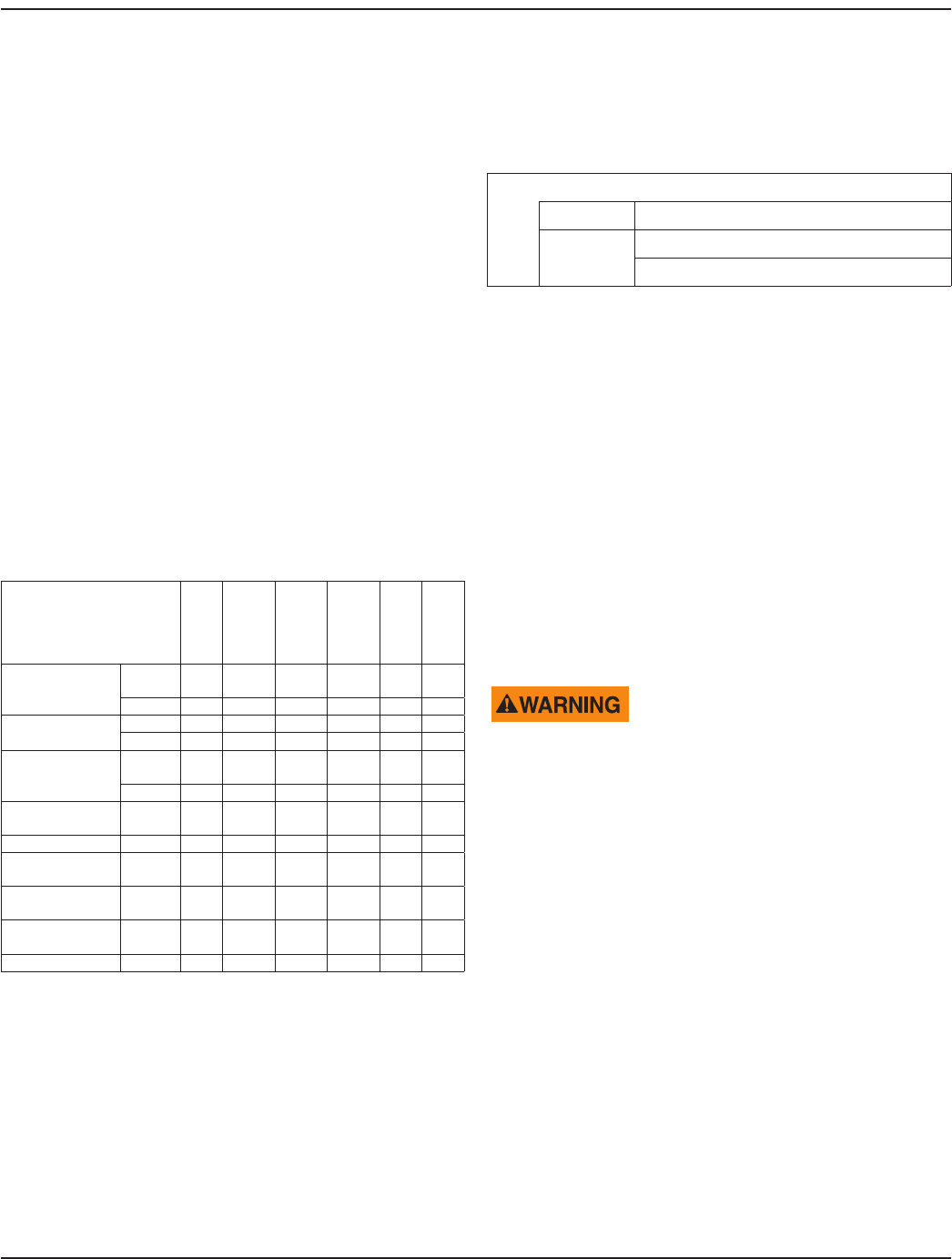Manual
Table Of Contents
- Safety
- Benefits of Vibration
- Head and Shaft Selection
- Adjusting the Backpack
- Pre-Operation Checks
- Operation
- Maintenance
- Servicing the Engine
- Troubleshooting
- Service
- Parts
- Honda Engine Parts
- Honda Engine Warranty
- Wyco Warranty
- Wyco Drawings
- W402535 Backpack Assembly
- W402530 Frame Assembly
- W402600 Speed Increaser Assembly, 1 of 4
- W402600 Speed Increaser Assembly, 2 of 4
- W402600 Speed Increaser Assembly, 3 of 4
- W402600 Speed Increaser Assembly, 4 of 4
- W402316 Replacement Clutch Kit
- W402630 Quick Disconnect Adapter

User Manual
Page 11 March 2014
◊ Carbon monoxide poisoning from engine exhaust.
Operate outside away from open windows or doors.
◊ Burns from hot parts.
Let the engine and exhaust system cool
before touching.
◊ Injury from moving parts.
Do not run the engine unless instructed to do so.
• Read the instructions before you begin, and make sure
you have the tools and skills required.
• To reduce the possibility of fire or explosion, be careful
when working around gasoline. Use only a non-
flammable solvent, not gasoline, to clean parts. Keep
cigarettes, sparks and flames away from all
fuel-related parts.
Remember that an authorized Honda servicing dealer knows
your engine best and is fully equipped to maintain and
repair it.
To ensure the best quality and reliability, use only new
genuine Honda parts or their equivalents for repair
and replacement.
Maintenance Schedule
Regular Service Period (1)
Perform at every indicated
month or operating hour
interval, whichever comes first.
Each
use
First
month
or 10 hr
Every 3
months
or 25 hr
Every 6
months
or 50 hr
Every
year
or 100
hr
Every
2
years
or 300
hr
Engine oil
Check
level
X
Change X (3)
Air filter
Check X
Clean X (2)
Spark plug
Check,
adjust
X
Replace X
Spark arrester
(applicable types)
Clean X
Fuel tank and filter Clean X (4)
* Idle speed
Check,
adjust
* Valve clearance
Check,
adjust
X (4)
*Combustion
chamber
Clean X (4)
* Fuel tube Check
* See the Honda Owner’s Manual.
(1) For commercial use, log hours of operation to determine
proper maintenance intervals.
(2) Service more frequently when used in dusty areas.
(3) Change engine oil every 25 hours when used under heavy
load or in high ambient temperatures.
(4) These items should be serviced by your Honda
servicing dealer, unless you have the proper tools and are
mechanically proficient. See the Honda Owner’s Manual for
service procedures.
Failure to follow this maintenance schedule could result in
non- warrantable failures.
Refueling
Recommended Fuel
Unleaded gasoline
U.S. Pump octane rating 86 or higher
Except
U.S.
Research octane rating 91 or higher
Pump octane rating 86 or higher
This engine is certified to operate on unleaded gasoline with
a pump octane rating of 86 or higher (a research octane
rating of 91 or higher).
Refuel in a well-ventilated area with the engine stopped.
If the engine has been running, allow it to cool first. Never
refuel the engine inside a building where gasoline fumes
may reach flames or sparks.
You may use regular unleaded gasoline containing no
more than 10% Ethanol (E10) or 5% Methanol by volume.
In addition, Methanol must contain co-solvents and
corrosion inhibitors. Use of fuels with content of Ethanol
or Methanol greater than shown above may cause starting
and/or performance problems. It may also damage metal,
rubber, and plastic parts of the fuel system. Engine damage
or performance problems that result from using a fuel with
percentages of Ethanol or Methanol greater than shown
above are not covered under the warranty.
GASOLINE IS HIGHLY FLAMMABLE AND EXPLOSIVE, AND
YOU CAN BE BURNED OR SERIOUSLY INJURED WHEN
REFUELING.
• STOP ENGINE AND KEEP HEAT, SPARKS, AND FLAME
AWAY.
• REFUEL ONLY OUTDOORS.
• WIPE UP SPILLS IMMEDIATELY.
OTE:N Fuel can damage paint and some types of plastic. Be
careful not to spill fuel when filling your fuel tank.
Damage caused by spilled fuel is not covered under
the Distributor’s Limited Warranty. Move at least 1
meter (39 inches) away from the fueling source and
site before starting the engine.
1. With the engine stopped and on a level surface, remove
the fuel ller cap and check the fuel level. Rell the tank if
the fuel level is low.
2. Add fuel to the bottom of the fuel level mark of the fuel
tank. Do not overll. Wipe up spilled fuel before starting
the engine.










